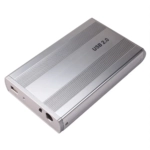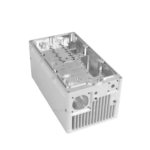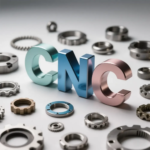1. Factors affecting the roughness of surfaces processed by grinding machines and their improvement measures
1. Factors related to grinding wheels
Mainly the grain size, the hardness of the wheel and the dressing of the wheel.
The finer the grain size of the grinding wheel, the more abrasive grains per unit area of the grinding wheel, the finer the scratches on the grinding surface and the lower the surface roughness value. However, if the particle size is too fine, the grinding wheel will be easily clogged, which will increase the surface roughness value, and it will also easily produce ripples and cause burns.
Wheel hardness refers to the ease with which abrasive grains fall from the wheel after being subjected to a grinding force. If the grinding wheel is too hard, the abrasive grains will not fall off after wear, causing strong friction and extrusion on the workpiece surface, increasing plastic deformation, increasing the surface roughness value, and easily causing burns if the wheel is too hard; too soft, the abrasive grains will fall off easily. The weakened grinding effect will also increase the surface roughness value, so the appropriate grinding wheel hardness should be selected.
The quality of dressing the wheel is closely linked to the dressing tools used, the longitudinal feed of the wheel to be dressed, etc. Grinding wheel dressing involves using diamond to remove the passivated abrasive grains on the outer layer of the grinding wheel to sharpen the cutting edge of the abrasive grains and reduce the roughness value of the grinding surface. In addition, the smaller the longitudinal feed of the dressing wheel, the more micro cutting edges there are on the dressing wheel and the better the contour, thus obtaining a smaller surface roughness value.
2. Factors related to workpiece material
Including material hardness, plasticity, thermal conductivity, etc.
The hardness, plasticity and thermal conductivity of the workpiece material have a significant impact on the surface roughness. Soft materials such as aluminum and copper alloys tend to clog the wheel and are more difficult to grind. Heat-resistant alloys with high plasticity and poor thermal conductivity are prone to early collapse of sand particles, leading to an increase in the roughness value of the grinding surface.
3. Factors related to processing conditions
Including the grinding quantity, cooling conditions, precision and vibration resistance of the processing system, etc.
Grinding quantities include grinding wheel speed, workpiece speed, grinding depth and longitudinal feed, etc. If the speed of the grinding wheel is increased, the propagation speed of plastic deformation of the surface metal may not keep up with the grinding speed and the material will not have time to deform, thereby reducing the roughness value of the surface metal. grinding surface. As the workpiece speed increases, the plastic deformation increases and the surface roughness value increases. The greater the grinding depth and longitudinal feed, the greater the plastic deformation, thereby increasing the surface roughness value. The temperature of the grinding wheel is high during grinding and the role of heat dominates, so the role of cutting fluid is very important. Using cutting fluid can lower the temperature of the grinding area, reduce burns, remove sand and falling chips to avoid scratching the workpiece, thereby reducing the surface roughness value. However, appropriate cooling methods and cutting fluids must be selected.
In addition, for cylindrical grinders, internal cylindrical grinders and surface grinding machines, the spindle accuracy of the machine tool grinding wheel, the accuracy and stability of the feeding system, the rigidity and vibration resistance of the The whole machine tool, etc., are all closely related. linked to surface roughness.
2. Grinding wheel dressing techniques
Honing is a process of sharpening the abrasive grains of an ultra-hard abrasive wheel. In this process, the bond between the abrasive grains and the dull abrasive grains of the grinding wheel must be eliminated, so that the abrasive grains of the grinding wheel with strong grinding performance protrude from the bond to form a sharp edge. Dressing should also remove tiny materials from the pores on the wheel surface to prevent the grinding force acting on the wheel from increasing. Increased grinding force on the grinding wheel will cause vibration and burns on the surface of the workpieces.
Without proper sharpening, it is impossible to achieve the high quality and dimensional consistency of machined parts, even with the best grinding wheels. Indeed, when investing in high quality grinding wheels, it is very important to dress them well in order to obtain high grinding performance.
Shaping can be considered part of the grindstone preparation work, and it is carried out at the same time as the sharpening of the ordinary grindstone. For superabrasive wheels, the two processes are carried out separately. First, the wheel is shaped. When grinding with superabrasive wheels, shaping is done using shaping tools or rollers, and dressing is often done using a ceramic-bonded dressing rod. Once shaping is complete, the wheel is sharpened.
Before dressing the grinding wheel, including shaping and sharpening, it is important to ensure that the spindle bearing is at a certain temperature (such as the normal grinding state of the grinding wheel). This prevents damage to part geometry and abnormal wear of grinding wheels and dressing tools. Cutting tools must be handled with care as they are usually made of a hard, wear-resistant but brittle diamond material, and are very susceptible to tiny cracks and breaks caused by slight collisions and stresses.
Since the diamond sharpener itself is a tool, it must be very sharp. Using a dull dressing tool to dress the surface of the wheel will dull the wheel. In order to maintain a high quality and sharp diamond dressing tool, single point or tapered dressing tools should be turned 1/8 of a circle at regular intervals. The number of rotations can be determined according to the size situation. Based on experience, it is appropriate to rotate at least once a day. Chisel heads and profiled dressing tools generally need to be turned 180° once before being dull.
Most cylindrical grinders place the workpiece and wheel on a horizontal line. The highest point of the outer circle of the workpiece and the highest point of the outer circle of the grinding wheel are called the workpiece/wheel contact point. The diamond dressing tool should dress the wheel as close to the workpiece/wheel as possible. contact point of the wheel. For internal grinding machine wheels, it is even more important to dress the diamond dressing tool near the highest point of the wheel’s outer circle (i.e. the workpiece/wheel contact point when grinding holes).
make minor cuts
In order to reduce cutting time, it always seems to be tempting to choose a greater cutting depth. This is an extremely false idea. The wheel should be dressed to the most appropriate dressing depth. Choosing too great a dressing depth will produce high cutting temperatures, reduce dresser life, and remove useful layers from the wheel. The end result is damage to the dresser and wheel, which is counterproductive. The optimal amount of dressing is the criterion that can restore the geometric shape of the grinding wheel and produce a good grinding edge after several trimmings. When using a single-point dressing tool, it should contact the direction of the wheel diameter with an axis tilt angle of 10-15°. The single-point dressing tool will then produce a sharpening effect during periodic rotation. Dressing tools with multiple contact points do not need to be tilted at this angle. Instead, place the entire end face of the dressing tool in contact with the surface of the wheel.
Lateral travel speed is the speed at which the dressing tool passes over the surface of the grinding wheel during dressing. It plays a key role in the surface roughness and metal removal rate required for machined parts. Too slow lateral movement will clog the wheel, damaging the workpiece’s surface roughness and metal removal rate. Too slow a lateral movement speed can also cause the grinding wheel to vibrate and burn the surface of the workpiece. Uniform and fast lateral movement speed can change the surface of the grinding wheel, improve the grinding performance of the grinding wheel, increase grinding efficiency, and reduce the surface roughness of workpieces.
stay cool
Proper use of coolant can accelerate the dressing speed and improve the dressing efficiency. Typically, using a 3/8-inch diameter jet of coolant can remove a large amount of heat from the dresser and extend the life of the dresser. When the diamond dressing tool passes through the grinding wheel, install a coolant nozzle to cover the entire surface of the grinding wheel or continuously add coolant to the diamond dressing tool. When the dressing tool contacts the grinding wheel and begins dressing, the dressing tool is never allowed to withdraw from the coolant. Otherwise, the diamond dressing tool will crack or break under extreme temperature changes of cold and heat.
Using a filter to filter the coolant with high precision can prevent dirt or chips from circulating through the coolant multiple times. Contaminated coolant can cause rapid wheel wear and increase the number of wheel dressings. Dry dressing of the grinding wheel is carried out only during dry grinding (only in this case the cooling of the diamond dressing tool can be interrupted). Before leaving work each day, turn off the coolant and let the wheel idle for a few minutes. This prevents the wheel from cracking.
Vibration is the enemy of size
When dressing grinding wheels, it is crucial to effectively reduce vibration and avoid leaving dressing marks on the surface of the grinding wheel, collision and damage to dressing tools, etc. This means that the grinding wheel must also be balanced, which is determined by the structural characteristics of the grinding wheel itself. Uneven density and the quality of the entire wheel geometry will affect the inherent balance of a wheel. It is therefore also important to choose a high-quality grinding wheel. If it is a high quality grinding wheel, just install it correctly to keep the wheel well balanced. According to the wheel manufacturer’s factory instructions, the wheel is marked with an upward arrow, which indicates the orientation of the light end of the wheel after rough balancing. Then the user can follow the arrow instructions and pay attention to dressing the wheel to achieve dynamic balance. The coolant is added evenly and can sometimes help keep the wheel balanced.
To further prevent vibration, it is necessary to ensure that the dressing tool is firmly clamped on the clamp seat and to maintain a minimum overhang to ensure that the dressing tool has a sufficient rigidity. If the diamond tool is not clamped firmly, it will cause vibration, produce noise, produce ripples on the workpiece surface, fatigue the workpiece surface, and damage the dressing tool.
A superabrasive wheel must be shaped and sharpened before you start grinding. Following the tips in this article will help your wheels produce the best grinding results.
3. The impact of grinder accuracy on workpiece machining accuracy
The geometric accuracy, rigidity, thermal deformation, movement stability and vibration resistance of the grinder will directly affect the processing accuracy of the workpiece.
1. Geometric precision of grinding machines
It refers to the movement accuracy and mutual position accuracy of each component without rolling load. It is impossible to make machine tools with absolute precision. Larger or smaller errors are always inevitable. This error will be reflected on the part to varying degrees during part processing, affecting the accuracy of part processing. Generally, there are radial runout and axial movement of the spindle, straightness of movement of moving parts such as work tables, mutual position errors and transmission errors of work parts, etc.
The radial runout and axial runout of the grinding wheel spindle and the movement error of the grinding headstock are large, which not only affects the roughness of the workpiece surface after grinding, but causes also the roundness and runout of the end face of the workpiece, causing uneven sparking during the grinding process. When the worktable moves when the vertical plane is not vertical, it will affect the linearity of the workpiece busbar on the inner and outer cylindrical grinders and cause a large error in the flatness of the workpiece when grinding the planes on surface grinders. The center line of the wheel spindle of the external cylindrical grinder and the center line of the wheel spindle of the internal cylindrical grinder are not at the same height as the center line of the wheel spindle of the external cylindrical grinder. the tailstock when grinding from the inside and outside. cones, the busbar of the part is a hyperbole. The center line of the grinding wheel spindle axis is not parallel to the moving direction of the worktable, which affects the flatness of the end face of the workpiece after grinding. The transmission error of the grinder has a great impact on the processing accuracy of thread grinding and gear grinding.
2. Rigidity of the crusher
It refers to the ability of the grinder parts to resist deformation when subjected to an external force (grinding force). That is to say, under the same grinding force, the smaller the deformation of the workpiece, the greater the rigidity. On the contrary, if the deformation of the part is significant, this means that the rigidity of the part is low. The magnitude of these deformations destroys the original static geometric precision of the grinder and will cause errors in machining the part. Therefore, a machine tool with good rigidity can achieve high workpiece machining precision.
3. Thermal deformation
The heat source inside the grinder is unevenly distributed, and the amount of heat generated by each part during movement is also different. The impact of external heat sources on different parts of the machine tool is also different. The thermal expansion coefficients of the parts are also different. different materials are also different, resulting in different parts of the machine tool. Trace deformation reduces the original geometric accuracy of the machine tool and affects the machining accuracy of the workpiece. Therefore, it is best to install the precision grinder in a constant temperature room to prevent temperature changes from affecting the precision of the machine tool and the workpiece.
4. Moving parts of the crawling grinding machine
When moving parts such as the grinding wheel frame of the grinder table perform microperiodic feeding or continuous movement at low speed, irregular movement occurs, commonly known as crawling. When this phenomenon occurs on the grinder, the feed during the grinding process will be uneven, which will affect the roughness of the grinding surface of the workpiece.
5. Crusher vibration
The grinding machine generates vibration during the grinding process, causing periodic changes in the relative position of the grinding wheel and the workpiece, causing vibration on the surface of the workpiece, seriously affecting the processing quality and precision.
To improve the accuracy of the workpiece after grinding, in addition to striving to eliminate the influence of the above factors, we should also pay attention to the reasonable selection of positioning marks, clamping methods, selection and correct repair of grinding wheels, as well as reasonable selection. grinding dosage and processing methods during workpiece processing.
Daguang focuses on providing solutions such as precision CNC machining services (3-axis, 4-axis, 5-axis machining), CNC milling, 3D printing and rapid prototyping services.









